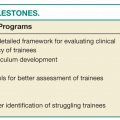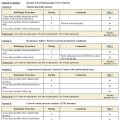Two key points regarding patient perceptions need to be recognized. First, patients may use perceptions as proxies for rating quality of care. For example, in studies of patient satisfaction, Cleveland Clinic reported that when metrics of service quality were lacking, patients used dirty rooms as a proxy for poor-quality care.7 Second, narration can be used to influence perceptions.7,8 One example given is surveying patient perception of employee hand washing. If the question is asked, “To what extent did employees wash their hands?” and the sinks are out of view, patients may report a very poor perception of employee hand washing. In contrast, employees can use narration and indicate to patients that a strict guideline is in place across all departments for hand washing and that it is strictly enforced.6
CHALLENGES IN RADIOLOGY
One of the major challenges in radiology is a persistent misperception by the public as to what a radiologist is and what he or she does.9 Several studies have shown that only about half of patients recognize that radiologists are physicians, with the rest often mistaking radiologists for technologists or nurses.9–11 In contrast to breast imagers and interventional radiologists who have regular patient contact, most radiologists have only limited or no patient contact in their respective practices.12 A widespread adoption of picture archiving and communication systems (PACS) has resulted in a distributed model of radiology workflow, and the radiologist interpreting a diagnostic imaging study may be located far away from the patient being imaged.13 Other factors influencing public perception of radiologists is the primary consultant role of the radiologist and the traditional reporting of results to the ordering provider.14
References
1. Institute of Medicine CoQoHCiA. Crossing the Quality Chasm: A New Health System for the 21st Century
Stay updated, free articles. Join our Telegram channel

Full access? Get Clinical Tree








